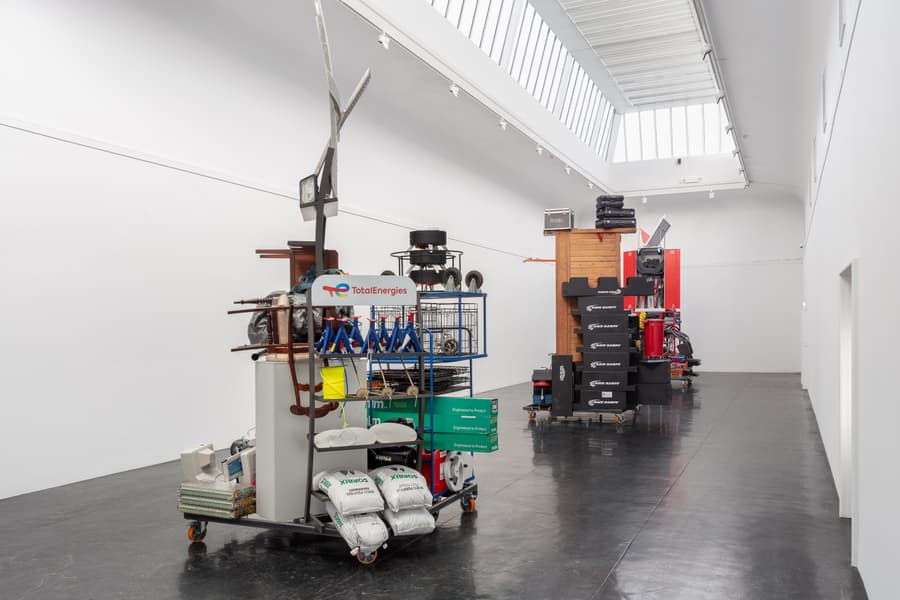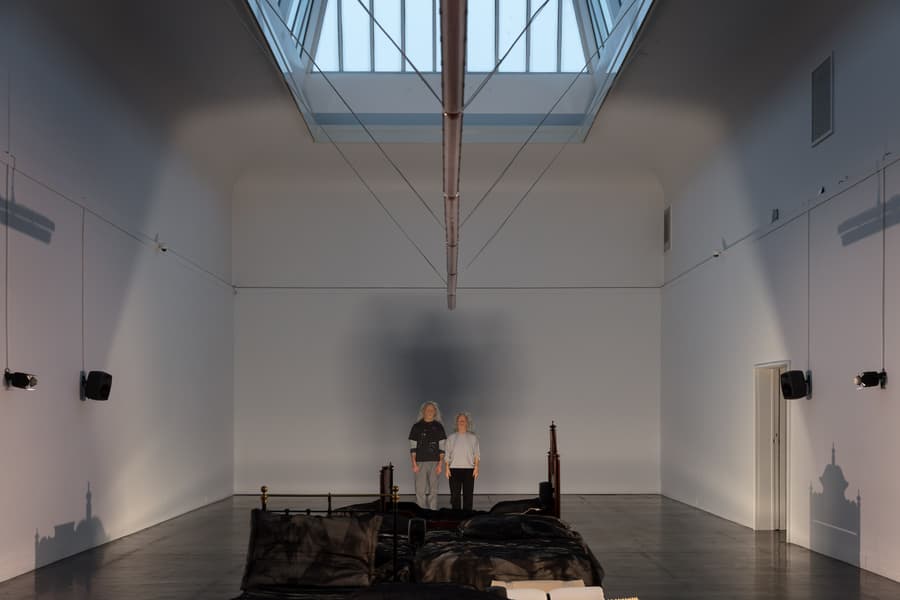Hugo Lous Mohr (Minne), Max Beckmann (1884-1950), Pelle Thommesen, Egil A. Egebakken, Snorre Andersen
Memorial exhibit
Most people associate Hugo Lous Mohr with the great decorative painter, especially the ceiling paintings in Oslo Cathedral. Less well known is the easel painter Mohr. It is him we meet at this memorial exhibition.
Two elements are evident from the outset in his painting: a striving for large form, and an expressive colour. Reproduction of nature, local color and the "pretty" interested him less than the expression and the symbol. Hugo Lous Mohr was born in Mandal in 1889.
His father was a priest, headmaster at the mission school in Stavanger, later parish priest in Bergen. The mother was a music teacher. Sibling group of eight — all musical and with scattered interests: science, music, visual arts, literature and adventure travel and farming life in Africa.
Hugo Lous Mohr took his artium at the age of 17 and chose a quick course of study — social economy with a subsequent position in the Foreign Office, first in Hamburg, later in St. Petersburg. We are in the middle of the First World War. He returned home in 1916 and interrupted his diplomatic career to become a painter.
The peers — Per Krohg, Henrik sørensen, Axel Revold and others, had already received their strong impulses in Paris before the war — from Matisse. Lous Mohr had seen art outside, but he had not been apprenticed. He started later than the others, and Henrik Sørensen became his teacher. But when the war ended, he went out. Two years in Paris with a detour to Spain. He studied Matisse's rhythmic form and expressive colour. A painter like Derain with his clear and cultivated form is said to have made an impression on him, but he probably experienced the stained glass windows of the cathedrals and the soulful sculpture of the Gothic more strongly, and above all the encounter with el Greco's ecstatic idiom was a decisive experience.
The debut exhibition in 1921 - he was then 32 years old --- showed the many impulses, but also a willingness to give an idea and a spiritual content clear visual form. He had painted Dostoevsky with a viewer's gaze and pale face against the mighty Russian steppe landscape, Bach in front of soaring organ pipes, an expressive variation on Bellini's Pietå in the Brerar Gallery, a portrait of two women, composed architecturally together with a dramatic landscape. In all these pictures we sense the future monumental painter.
New journeys and new studies, e.g. a. medieval church art and certainly the mystic Matthias Grünewald, of whom we soon live the atmosphere in the first real mural painting here at home, the fresco in the parish house of St. John's Church in Bergen, which he worked on from 1922 to 24. A strong and beautiful decoration that formed climax in his first phase of development.
Fate led Mohr to Volda in Sunnmøre. He was to live here for several years, and the images from this beautiful and dramatic landscape form a new era in his development, from here originate some of his most important easel images such as the luminous and warm "Grain Sheaf" and a number of other images with motifs from his work with the harvest of the field. Again we see how Mohr aims for the large architectural form, where the figures are built into a constructive system that lifts them out of the genre reportage and into the universal and symbolic - and perhaps a little heroic. Otherwise, the Volda nature redeemed a number of strong, clear and luminous mountain landscapes and natural images. The mountain motif in particular is something he constantly returns to later in life.
Towards the end of his twenties, he settles in Oslo, and now follows a period dominated by portraits, especially a series of ravishing children's portraits, where he interprets with insight and tenderness the child's open and at the same time secretive mind, where the personality prepares.
1 1932 he is back in Volda to decorate al fresco the new church's large foundation wall. This is one of the best-composed - and at the same time most content-rich - paintings in our church art, with a young, radiant Christ surrounded by a luminous mandorla as the dominant central part and with the well-known accounts of the Gospels in the surrounding fields.
A few more church decorations must be mentioned:
an altarpiece in Rii's church and twelve apostle figures for the restored cathedral in Kristiansand (1934).
It is now — from the mid-thirties Mohr embarks on what was to become the main work of his life; to adorn the vault in Vår Frelsers church in Oslo. This ceiling decoration, which required 15 years of continuous work, belongs among the main works of modern Norwegian monument painting. With its surface on the ocean floor, it is at the same time the largest single work of this kind that has been carried out in this country.
The highest part of the vault, at the intersection between the naves, is designed as a universe with the sun in the middle irradiated with light. Below, around the four vaults, the figure is placed so that it undulates in an eternal stream, as if set in motion by the central Christ sun. In this huge, moving stream of images, the individual scenes stand out and then slide effortlessly into the next.
In connection with the celebration of Oslo city's 900th anniversary, the church was rededicated with its new "sky" and was named Oslo Cathedral.
It had to be a proper end to the exhibition visit here in Kunstnernes Hus to study this sumptuous vault painting. Then you will really understand how the easel pictures have always pointed towards this life's work.
Because the easel pictures continued to flow from Mohr's hand all the time with motifs from Eftang, where he spent the summer, and from the mountains, which he liked to visit in the autumn.
These landscape pictures meant both a break from the strenuous life under the vault in the cathedral and at the same time a constant renewal of the painterly vision and mind. These latest landscape pictures are freer and fresher, more carefree than the earlier ones. He liked to seek out untouched, weather-beaten vegetation on Eftang, where the light and clear colors provided a richness of detail that could approach the chaotic. In this he cleaned up, but no further than that the pictures keep the fresh and untouched.
In our cultural milieu, Hugo Lous Mohr until his death in 1970 was a fine and characteristic feature: old culture and education, musical, well-read, wide range of interests, familiar and dignified.
- Øysten Parmann


